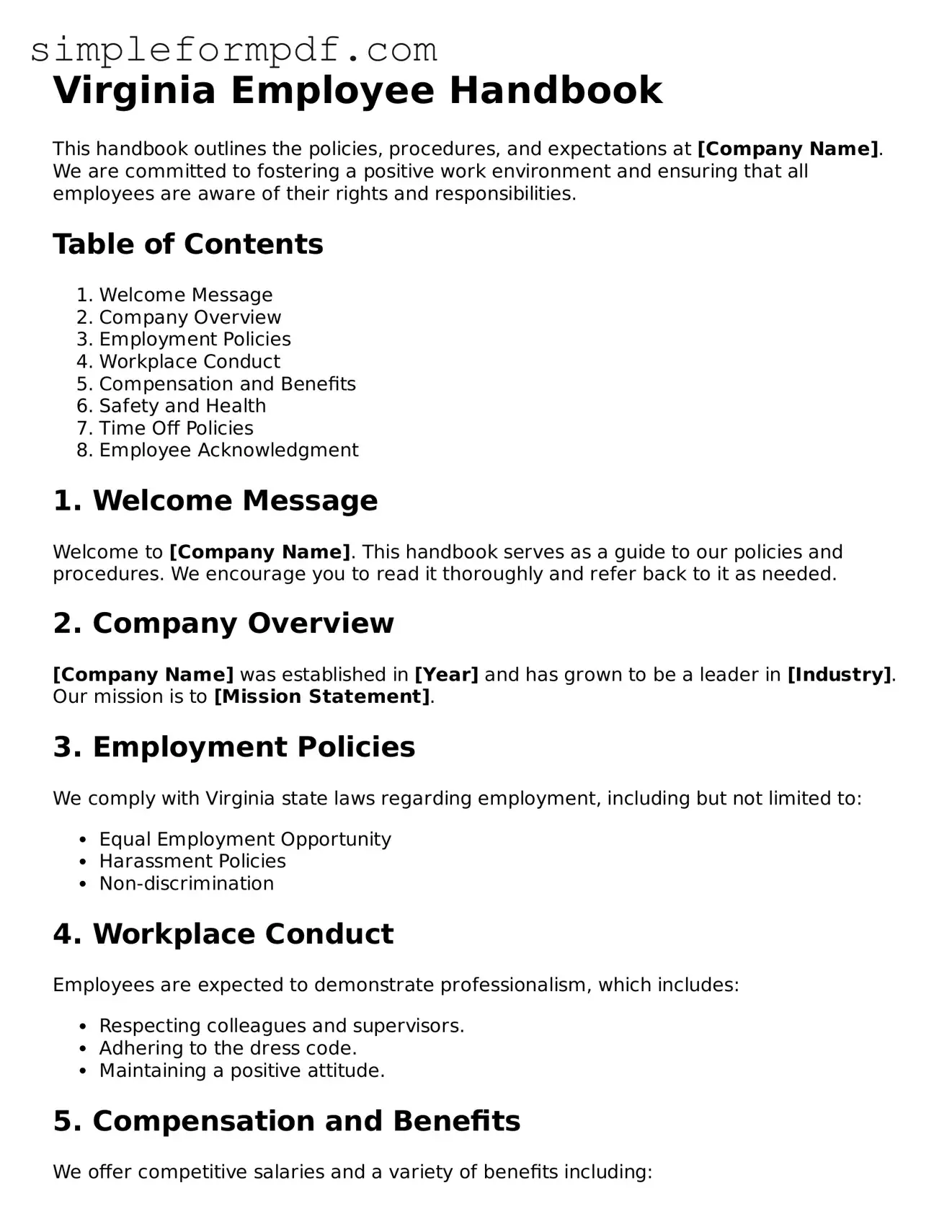Virginia Employee Handbook
This handbook outlines the policies, procedures, and expectations at [Company Name]. We are committed to fostering a positive work environment and ensuring that all employees are aware of their rights and responsibilities.
Table of Contents
- Welcome Message
- Company Overview
- Employment Policies
- Workplace Conduct
- Compensation and Benefits
- Safety and Health
- Time Off Policies
- Employee Acknowledgment
1. Welcome Message
Welcome to [Company Name]. This handbook serves as a guide to our policies and procedures. We encourage you to read it thoroughly and refer back to it as needed.
2. Company Overview
[Company Name] was established in [Year] and has grown to be a leader in [Industry]. Our mission is to [Mission Statement].
3. Employment Policies
We comply with Virginia state laws regarding employment, including but not limited to:
- Equal Employment Opportunity
- Harassment Policies
- Non-discrimination
4. Workplace Conduct
Employees are expected to demonstrate professionalism, which includes:
- Respecting colleagues and supervisors.
- Adhering to the dress code.
- Maintaining a positive attitude.
5. Compensation and Benefits
We offer competitive salaries and a variety of benefits including:
- Health insurance
- Retirement plans
- Paid time off
6. Safety and Health
The safety of our employees is a top priority. Employees should:
- Report any unsafe conditions to their supervisor.
- Participate in safety training sessions.
- Follow all safety procedures.
7. Time Off Policies
Eligible employees can take time off for various reasons. This includes sick leave, personal days, and paid holidays. Full details can be found in the leave policy section.
8. Employee Acknowledgment
All employees are required to sign an acknowledgment form confirming that they have read and understood the policies outlined in this handbook.
Thank you for being part of [Company Name]. Together, we can create a thriving workplace.
